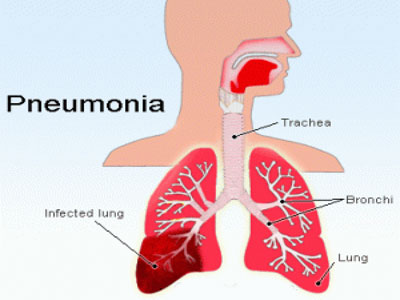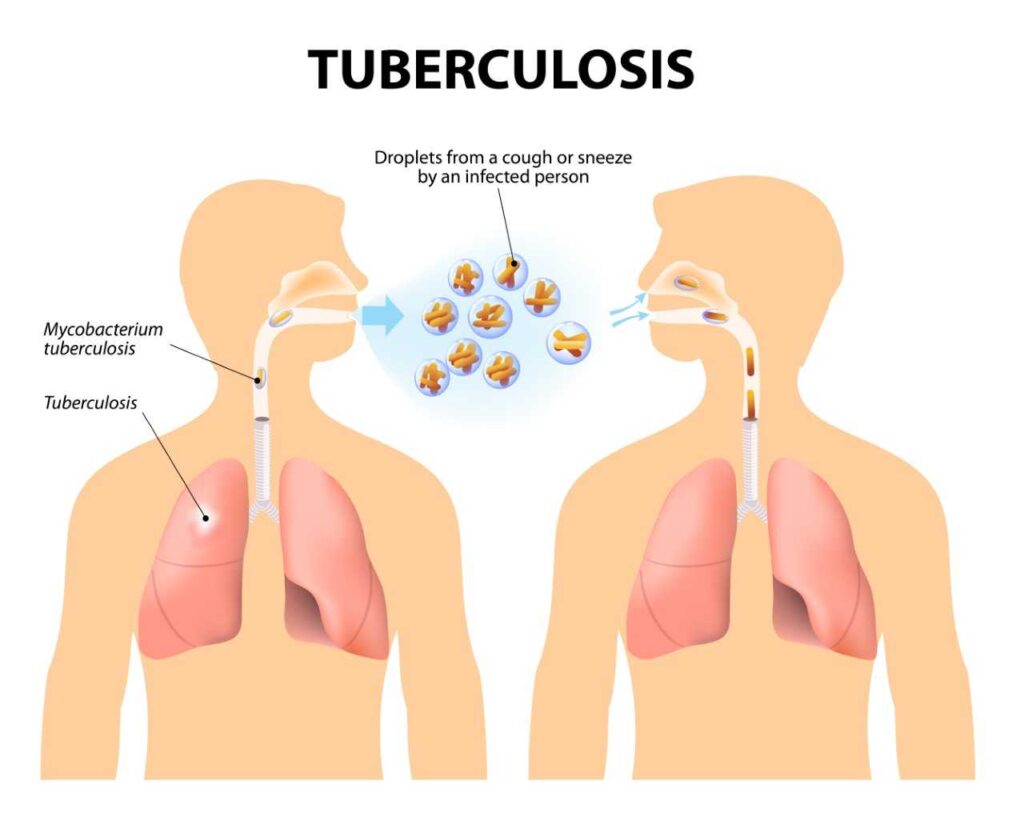
Pneumonia is an inflammation of the lung tissue. It is usually due to infection. Pneumonia tends to be more serious than bronchitis. Bronchitis is an inflammation or infection of the large airways. Sometimes bronchitis and pneumonia occur together which is called bronchopneumonia.
Common symptoms of pneumonia include:
Less common symptoms of pneumonia include:
TB is a bacterial infection. TB that affects the lungs (pulmonary TB) is the most contagious type, but it usually only spreads after prolonged exposure to someone with the illness.
In most healthy people, the body’s natural defense against infection and illness (the immune system) kills the bacteria and there are no symptoms.
Sometimes the immune system cannot kill the bacteria but manages to prevent it from spreading in the body.
You will not have any symptoms, but the bacteria will remain in your body. This is known as latent TB. People with latent TB are not infectious to others.
If the immune system fails to kill or contain the infection, it can spread within the lungs or other parts of the body and symptoms will develop within a few weeks or months. This is known as active TB.
Latent TB could develop into an active TB disease at a later date, particularly if your immune system becomes weakened.
